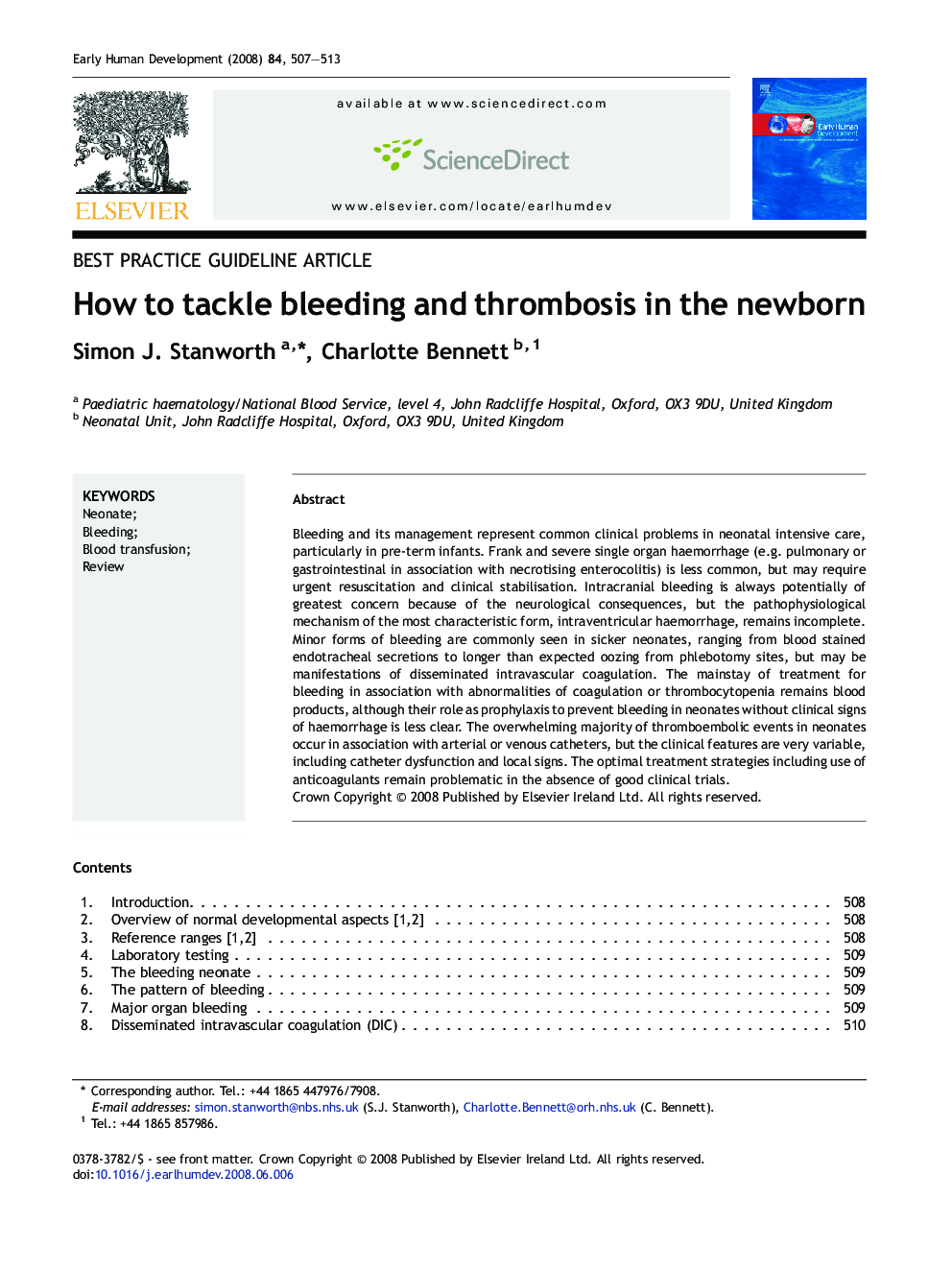| Article ID | Journal | Published Year | Pages | File Type |
|---|---|---|---|---|
| 3918189 | Early Human Development | 2008 | 7 Pages |
Bleeding and its management represent common clinical problems in neonatal intensive care, particularly in pre-term infants. Frank and severe single organ haemorrhage (e.g. pulmonary or gastrointestinal in association with necrotising enterocolitis) is less common, but may require urgent resuscitation and clinical stabilisation. Intracranial bleeding is always potentially of greatest concern because of the neurological consequences, but the pathophysiological mechanism of the most characteristic form, intraventricular haemorrhage, remains incomplete. Minor forms of bleeding are commonly seen in sicker neonates, ranging from blood stained endotracheal secretions to longer than expected oozing from phlebotomy sites, but may be manifestations of disseminated intravascular coagulation. The mainstay of treatment for bleeding in association with abnormalities of coagulation or thrombocytopenia remains blood products, although their role as prophylaxis to prevent bleeding in neonates without clinical signs of haemorrhage is less clear. The overwhelming majority of thromboembolic events in neonates occur in association with arterial or venous catheters, but the clinical features are very variable, including catheter dysfunction and local signs. The optimal treatment strategies including use of anticoagulants remain problematic in the absence of good clinical trials.
